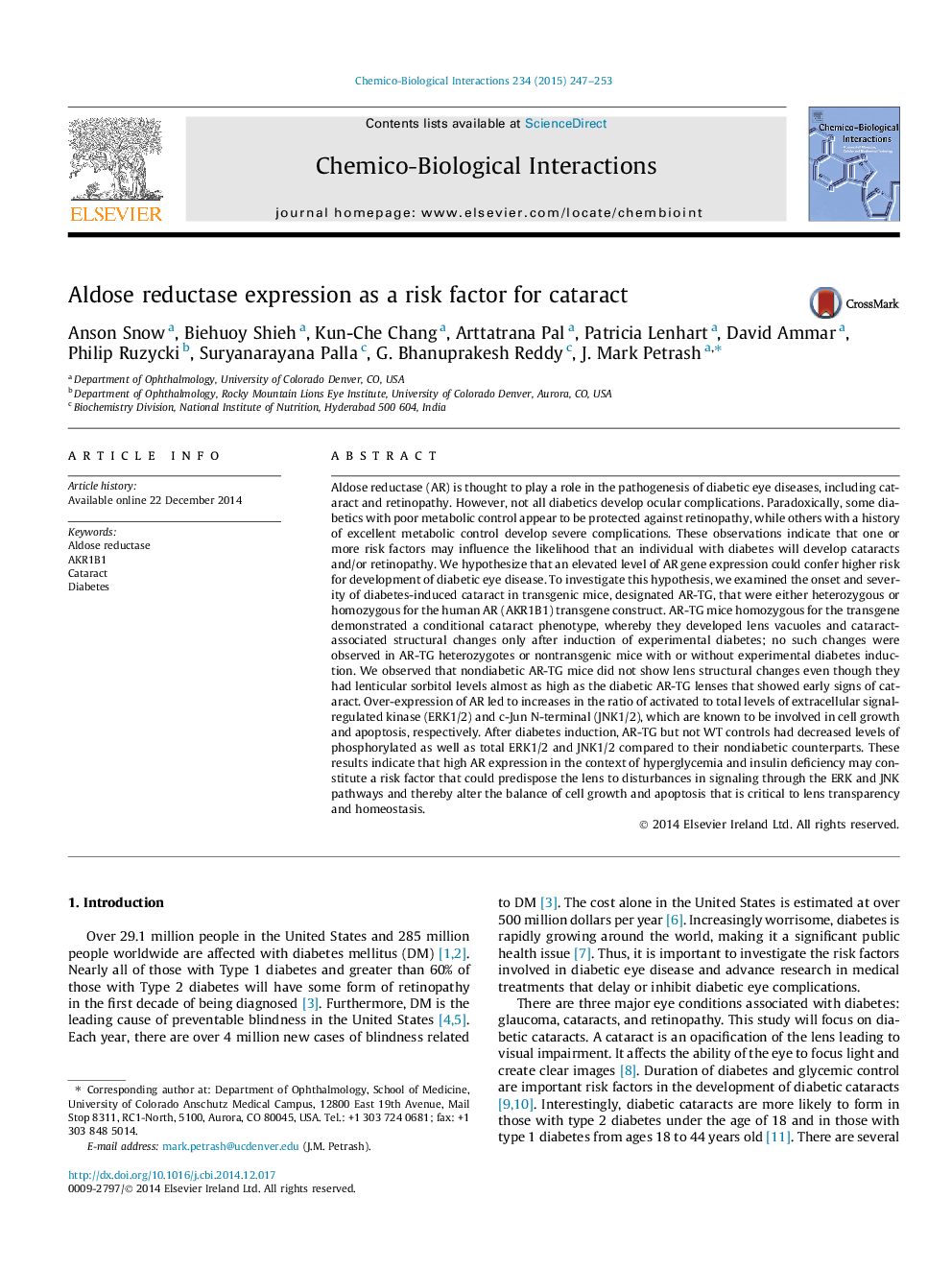| کد مقاله | کد نشریه | سال انتشار | مقاله انگلیسی | نسخه تمام متن |
|---|---|---|---|---|
| 2580243 | 1561607 | 2015 | 7 صفحه PDF | دانلود رایگان |
• We examined the effects of aldose reductase over-expression in transgenic mice.
• Cataract-associated vacuoles were observed in diabetic transgenic mice.
• Transgenic mice showed high levels of activated ERK and JNK.
• Diabetes caused a reduction in activated ERK and JNK in transgenic mice.
Aldose reductase (AR) is thought to play a role in the pathogenesis of diabetic eye diseases, including cataract and retinopathy. However, not all diabetics develop ocular complications. Paradoxically, some diabetics with poor metabolic control appear to be protected against retinopathy, while others with a history of excellent metabolic control develop severe complications. These observations indicate that one or more risk factors may influence the likelihood that an individual with diabetes will develop cataracts and/or retinopathy. We hypothesize that an elevated level of AR gene expression could confer higher risk for development of diabetic eye disease. To investigate this hypothesis, we examined the onset and severity of diabetes-induced cataract in transgenic mice, designated AR-TG, that were either heterozygous or homozygous for the human AR (AKR1B1) transgene construct. AR-TG mice homozygous for the transgene demonstrated a conditional cataract phenotype, whereby they developed lens vacuoles and cataract-associated structural changes only after induction of experimental diabetes; no such changes were observed in AR-TG heterozygotes or nontransgenic mice with or without experimental diabetes induction. We observed that nondiabetic AR-TG mice did not show lens structural changes even though they had lenticular sorbitol levels almost as high as the diabetic AR-TG lenses that showed early signs of cataract. Over-expression of AR led to increases in the ratio of activated to total levels of extracellular signal-regulated kinase (ERK1/2) and c-Jun N-terminal (JNK1/2), which are known to be involved in cell growth and apoptosis, respectively. After diabetes induction, AR-TG but not WT controls had decreased levels of phosphorylated as well as total ERK1/2 and JNK1/2 compared to their nondiabetic counterparts. These results indicate that high AR expression in the context of hyperglycemia and insulin deficiency may constitute a risk factor that could predispose the lens to disturbances in signaling through the ERK and JNK pathways and thereby alter the balance of cell growth and apoptosis that is critical to lens transparency and homeostasis.
Journal: Chemico-Biological Interactions - Volume 234, 5 June 2015, Pages 247–253
